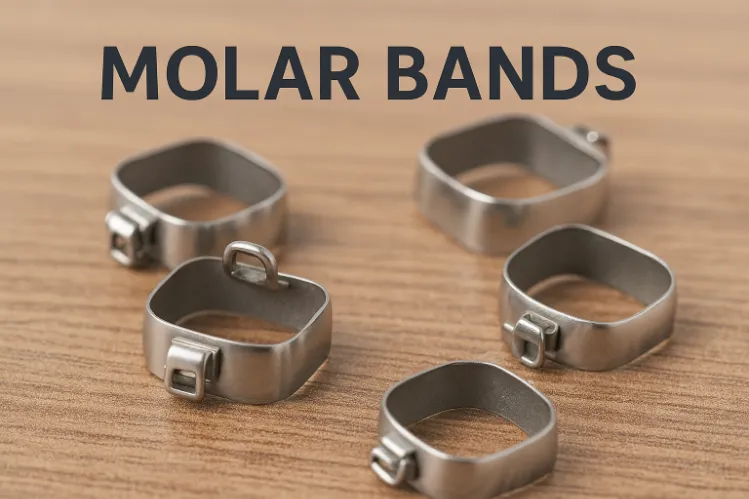
Traditional metal braces have been the go-to for people looking to fix their crooked or misaligned teeth for many years. But in 2025, there are so many other options that deliver effective results with enhanced pain, comfort, and aesthetics.
New methods and better technologies that have been developed allow users to align their teeth without the discomfort seen with traditional braces. If you have ever wondered what other alternatives are available apart from the metal braces, then this guide is definitely for you. Now let’s explore the best alternatives to braces in 2025.

Although metal braces are an excellent solution, they seem to be rather inconvenient, which is why people have started looking for alternative teeth straightening methods. Most individuals consider them to be uncomfortable since they have wires and brackets affixed to them.
Besides, metal braces are quite visible, and many users feel uneasy when wearing them. It’s not possible to remove your metal braces since they are permanently bonded to the teeth, which also makes eating or even cleaning your teeth a little tricky sometimes. For these reasons, people have now resorted to looking for a better solution, a solution that offers more comfort and flexibility and is not as visible.

Clear aligners have been gaining popularity for the last few years. Compared to the traditional metal brace, clear aligners have remained the most preferred teeth straightening method throughout the year 2025.
These are clear plastic container trays that fit over your teeth and work to shift them into place little by little. They’re called clear aligners due to their invisible aesthetic, which is also why many people have developed a liking for them because of their transparency. Clear aligners for adults ensure discretion for those who do not want others to notice that he or she is straightening his or her teeth and can quickly get started with the treatment.
Clear braces offer many benefits that make them a top choice for people looking to straighten their teeth:
Clear aligners function in the same way as traditional braces but exert light pressure on your teeth for a long time. Similar to other forms of orthodontic treatments, when you begin the treatment, your specialist will provide you with a set of aligners to wear for about 2 weeks. Many specialists organize the sequence of aligners in a set and denote every set up to the complete set as stage one.
They are slightly different from each other and contribute to a gradual shift of your teeth into the right position. You will wear these clear aligners for most of the day and night, but you can remove them while eating, drinking, or brushing your teeth. The vast majority of patients complete their clear aligner treatment within a year or two, based on the severity of the teeth misalignment.
Read our detailed blog on Affordable Clear Aligner Options in the UK.
Lingual braces are another type of invisible braces and work a bit differently than clear aligners. These braces are attached to the back of your teeth, making them invisible from the front. Lingual braces are an excellent choice for more complex alignment issues that might not be fully corrected with clear aligners.
While lingual braces are discreet, they do require some adjustment. Because they’re placed on the inside of your teeth, they can initially affect your speech and may take some time to get used to. However, they offer the same effectiveness as traditional braces, making them a powerful option for those with more severe dental issues.
Lingual braces offer several advantages over traditional metal braces:
Lingual braces are similar to wire braces; however, instead of the exterior of your teeth, they are fitted at the back. Your orthodontist will install brackets on the back of each tooth and then bend wires over the brackets to apply pressure that can shift your teeth.
Like all other orthodontic appliances, lingual braces also need to be adjusted periodically to ensure that your teeth are aligning properly. Lingual braces take nearly as long as other common braces, such as metal braces; typically, this can range from as little as 18 months to up to 24 months, depending on the condition of your teeth.
Read more on All Your Teeth Straightening Options Explained.

If you like the idea of traditional braces but don’t want the noticeable metal look, ceramic braces are a great alternative. Ceramic braces work just like metal braces, but the brackets are made from clear or tooth-colored ceramic, making them less visible.
They’re a popular choice for people who want the effectiveness of traditional braces but with a more subtle appearance. Ceramic braces are ideal for both teenagers and adults who want to avoid the obvious metal look while still fixing their orthodontic issues.
Ceramic clear braces offer several advantages, some of which are as below:
Ceramic braces are applied in the same way as traditional metal braces. Your orthodontist will attach ceramic brackets to the front of your teeth and connect them with wires that gently move your teeth into place.
The treatment process is also similar to metal braces, requiring regular adjustments to ensure your teeth are moving properly. However, one thing to keep in mind is that ceramic braces are slightly more fragile than metal, so they require careful maintenance to avoid damage.
Another exciting option in 2025 is self-ligating braces. These are the same as the common traditional braces but with one significant difference, the wires are held in place with clips or doors. This design results in lower friction and faster movements of teeth, hence self-ligating braces can be recommended for patients who wish for faster treatment and fewer orthodontist visits. Self-ligating braces are made of metal and ceramic. Furthermore, patients have the freedom to select the most appropriate one.
Self-ligating braces offer several benefits, especially when compared to traditional braces:
Self-ligating braces work similarly to traditional braces, but instead of elastic bands, they use a special clip or sliding mechanism to hold the archwire in place. This allows the wire to move more freely, making the tooth movement more efficient. Patients with self-ligating braces typically have shorter and more comfortable visits to the orthodontist, as the braces don’t need to be tightened as often.
In 2025, you have more options than ever when it comes to straightening your teeth. Whether you want the discreet look of clear aligners, the hidden effectiveness of lingual braces, or ceramic braces, there’s an option that can fit your needs and lifestyle. Each alternative offers its own set of benefits, so it’s important to consider what matters most to you – whether it’s appearance, comfort, or speed.
Talking to your orthodontist about your goals and concerns will help you choose the best solution for your teeth. No matter which option you go for, the most important thing is that you take the step towards achieving a healthier, straighter smile.





Curated the best for your knowledge
.png) Metallic Taste in Mouth: Causes and How to Get Rid of It
Metallic Taste in Mouth: Causes and How to Get Rid of ItHaving metal taste in the mouth first thing in the morning can be an unexpected experience. You wake up, take a swallow, and suddenly have a metallic taste in your mouth, as if you'd been chewing on a handful of change. It's annoying, a little scary, and sometimes for no apparent reason. For some people, it will be nothing but a minor nuisance; others may fall into the late-night goose chaser. Sometimes it's a sign that there is something wrong with your braces; other times, it could mean that there is something wrong with one of your teeth. But here's the good news: Most metallic tastes are temporary, harmless, and can be treated or resolved. So let's take a closer look at the possibilities.
Read More How Molar Bands Work in Braces and Retainers to Keep Your Teeth in Line
How Molar Bands Work in Braces and Retainers to Keep Your Teeth in LineIf you’ve ever started orthodontic treatment, you already know there are a lot of tiny pieces involved. Wires, brackets, elastics, retainers, attachments… and then there are molar bands. They’re not as famous as braces themselves, but they play a surprisingly big role in keeping your smile moving in the right direction. Some people don’t really notice them. While others desperately want to know why that metal ring is even there. So let’s break it all down: what molar bands are, why orthodontists use them, and how they work in both braces and retainers. Plus, what you should expect throughout the process.
Read More.webp) Dental Bonding Cost: Prices, Process & What to Know
Dental Bonding Cost: Prices, Process & What to KnowIf you’re thinking about fixing a chipped tooth, closing a gap, or smoothing out uneven edges, dental bonding is often the easiest (and quickest) way to do it. And honestly? It’s one of the most budget-friendly cosmetic treatments out there, if you know what to expect. But here’s the part everyone worries about first: “How much does tooth bonding cost?” The short answer: it depends. The long answer: let’s break it all down so you actually understand where the price comes from, what you’re paying for, and whether bonding is the right fix for your smile.
Read MoreQuick Links

Heading